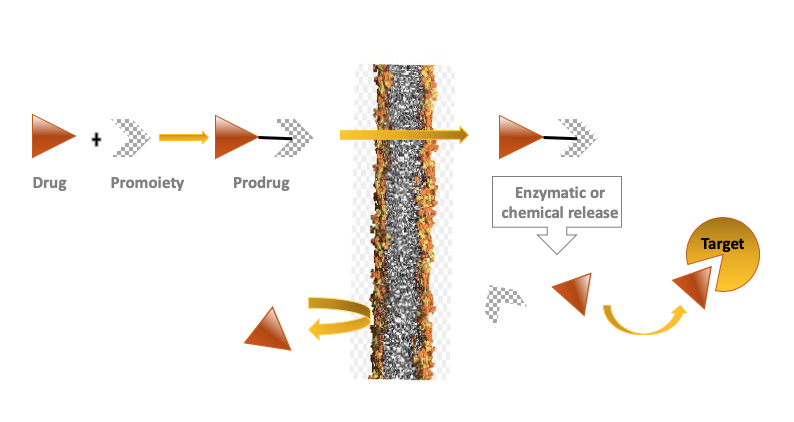Today, almost all important microbial infections throughout the world, such as tuberculosis, malaria, nosocomial diseases, are becoming resistant to antibiotics. Absent in human, the alternative mevalonate-independent methylerythritol phosphate (MEP) pathway for the biosynthesis of isoprenoids is present in many pathogenic bacteria e.g. Mycobacterium tuberculosis, M. leprae, as well as in opportunistic pathogens e.g. enterobacteria, Acinetobacter spp., Pseudomonas spp., or in the parasitic Plasmodium species responsible for malaria and therefore represents an attractive target for the design and development of new antimicrobials. Accordingly, all enzymes of the MEP pathway represent potential targets for the design of novel and unexplored types of antibacterial and antiparasitic drugs, with minimal side effects expected for the patient.
Several approaches are developed:
1- Biligand approach is based on the synthesis of a single molecule that simultaneously target the substrate and the cofactor binding sites. The functional groups of these inhibitors are linked by a well-defined designed spacer.

2- Bisubstrate approach is based on in situ fragment-based drug design that employs the target enzyme itself to catalyze the synthesis of a well-suited inhibitor. Appropriate and complementary bioorthogonal billigands are designed to exploit in situ click chemistry which use the target enzyme itself to catalyze the synthesis or the release of the inhibitors.

3- Prodrug approach is a widely known molecular modification strategy that aims to optimize the pharmacological properties of drugs to improve their solubility and pharmacokinetic features. A prodrug is an inactive, bioreversible derivative of an active drug which undergoes enzymatic and/or chemical transformation in vivo in order to release the active parent drug.

4- Mutual prodrug approach consists of two drugs chemically linked together, so each therapeutic agent acts as a promoiety to the other. The active moiety selected may have the same biological action as that of the parent drug and thus may give a synergistic action, or this moiety may have some additional biological action lacking in the parent drug, thus ensuring some additional benefit.

